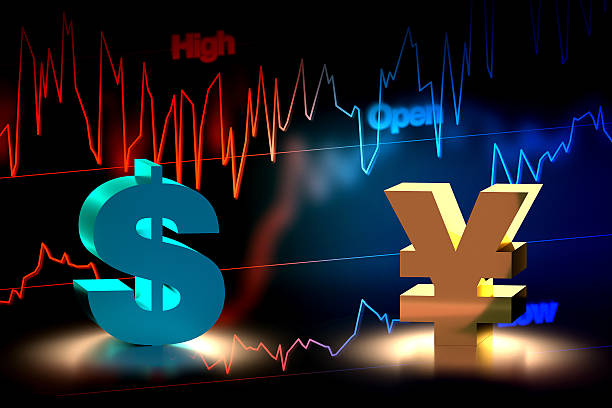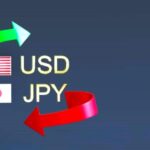Japanese Yen Gains Strength Against USD but Lacks Strong Bullish Commitment Amid Trade Tensions.
The Japanese Yen (JPY) has shown resilience in the wake of strong inflation data from Tokyo’s Consumer Price Index (CPI), which supports the case for more interest rate hikes by the Bank of Japan (BoJ). However, while the currency attracted some buyers, its bullish momentum appears limited due to concerns over the impact of US President Donald Trump’s auto tariffs on Japan’s economy.
Meanwhile, the US Dollar (USD) remains relatively stable, as investors await the Personal Consumption Expenditure (PCE) Price Index report, which could provide new insights into the Federal Reserve’s (Fed) interest rate policy. With the Fed expected to resume its rate-cutting cycle soon, the market remains cautious, leading to mixed movements in the USDJPY pair.
As global trade tensions escalate and monetary policy divergences come into focus, market participants are carefully evaluating the outlook for JPY and USD. This article explores the latest factors influencing the USD/JPY pair, including Japan’s inflation outlook, the BoJ’s policy stance, US trade concerns, and upcoming economic indicators.
Tokyo CPI Print Supports Yen Bulls, But Trade Worries Limit Gains.
The Japanese Yen started the week on a positive note following the release of Tokyo’s CPI data, which showed stronger-than-expected inflation. The headline Tokyo CPI rose by 2.9% in March, up from 2.8% in February, signaling continued price pressures in the economy. More importantly, the Tokyo Core CPI, which excludes fresh food prices, increased to 2.4% from 2.2%, while a further core measure (excluding both fresh food and energy) rose to 2.2% from 1.9%.
These figures indicate that inflation in Japan’s capital city is running above the BoJ’s 2% target, reinforcing expectations that the central bank may continue its tightening cycle. The Bank of Japan’s Summary of Opinions from its March meeting also reflected a growing consensus among policymakers that rate hikes should be pursued if economic conditions align with forecasts.
Despite this hawkish stance, JPY bulls remain cautious due to ongoing concerns surrounding Donald Trump’s trade policies. The US President recently announced a 25% tariff on imported cars and light trucks, set to take effect on April 3. This move is expected to have a significant impact on Japan’s auto industry, which contributes approximately 3% of the country’s GDP.
The market fears that Japan’s automakers could face severe financial pressures, affecting the broader economy. Given this backdrop, JPY buyers remain hesitant to place aggressive bullish bets, despite the prospect of higher Japanese interest rates.
BoJ’s Hawkish Tone vs. Fed’s Rate-Cutting Outlook.
While the Bank of Japan maintains a cautious hawkish stance, the Federal Reserve is moving in the opposite direction. Market expectations suggest that the Fed will resume its rate-cutting cycle soon, as inflationary pressures in the United States show signs of moderation.
Richmond Fed President Thomas Barkin recently warned that economic uncertainty due to Trump’s trade policies could negatively impact consumer and business spending. This wait-and-see approach suggests that the Fed may delay further rate hikes or even begin reducing interest rates earlier than anticipated.
Similarly, Boston Fed President Susan Collins acknowledged the central bank’s dilemma, stating that it must choose between maintaining tight policy or proactively addressing potential economic weaknesses. Given the current landscape, Collins expects the Fed to keep interest rates steady for longer, reinforcing expectations of a dovish stance.
This contrast between the BoJ’s cautious hawkishness and the Fed’s dovish outlook creates an interesting dynamic for the USD/JPY pair. While higher Japanese rates should theoretically support the JPY, the ongoing uncertainties surrounding trade policy and global risk sentiment are limiting its gains.
Trade Uncertainty Clouds Yen’s Safe-Haven Appeal.
The Japanese Yen is traditionally regarded as a safe-haven currency, benefiting from periods of global economic uncertainty. However, the recent introduction of US auto tariffs is complicating its role as a safe-haven asset.
With Japan’s economy heavily reliant on automotive exports, the new 25% tariff is expected to hurt the industry’s profitability and competitiveness. Investors fear that further retaliatory tariffs from Japan could escalate trade tensions, potentially weakening the JPY’s appeal.
Despite this uncertainty, the broader risk-off sentiment in the global financial markets has provided some support to the Japanese Yen. Fears of a global economic slowdown, exacerbated by Trump’s trade policies and Fed rate concerns, have led to cautious sentiment among investors.
However, the USDJPY pair remains near a four-week high, as JPY bulls appear reluctant to make strong moves. The US PCE Price Index, set for release on Friday, could provide a much-needed catalyst for market direction.
US PCE Price Index in Focus: Will It Drive USDJPY?
The upcoming release of the US Personal Consumption Expenditure (PCE) Price Index will be a key event for currency markets. As the Fed’s preferred measure of inflation, the PCE Index is closely watched for signals regarding future monetary policy decisions.
If the data shows a continued decline in inflationary pressures, it could reinforce expectations of a Fed rate cut, leading to USD weakness and boosting the Japanese Yen. Conversely, if the PCE Index remains strong, the Fed may hold rates steady for longer, potentially supporting the USDJPY pair.
Given the current divergence in monetary policy expectations, traders will be paying close attention to the PCE data to determine the next major move in USDJPY.
Conclusion: Japanese Yen Faces Mixed Forces as Trade and Monetary Policies Collide.
The Japanese Yen is in a delicate position, influenced by conflicting market forces. On one hand, strong Tokyo CPI data and the Bank of Japan’s hawkish stance are providing underlying support for JPY strength. On the other hand, Trump’s auto tariffs and concerns over Japan’s exports are limiting the bullish momentum.
Meanwhile, the US Dollar is also navigating monetary policy uncertainty, with the Federal Reserve likely to cut rates soon while remaining cautious about the economic impact of US trade policies.
As a result, the USD/JPY pair remains in a consolidation phase, with traders awaiting fresh cues from the US PCE Price Index to determine the next market move. If the PCE data weakens, it could boost JPY, while a strong inflation reading may keep USDJPY elevated.
In the broader context, the JPY’s performance in the coming weeks will be shape by the BoJ’s policy decisions, US trade developments, and global risk sentiment. With geopolitical uncertainties still in play, market participants should brace for potential volatility in USDJPY as new economic data emerges.









